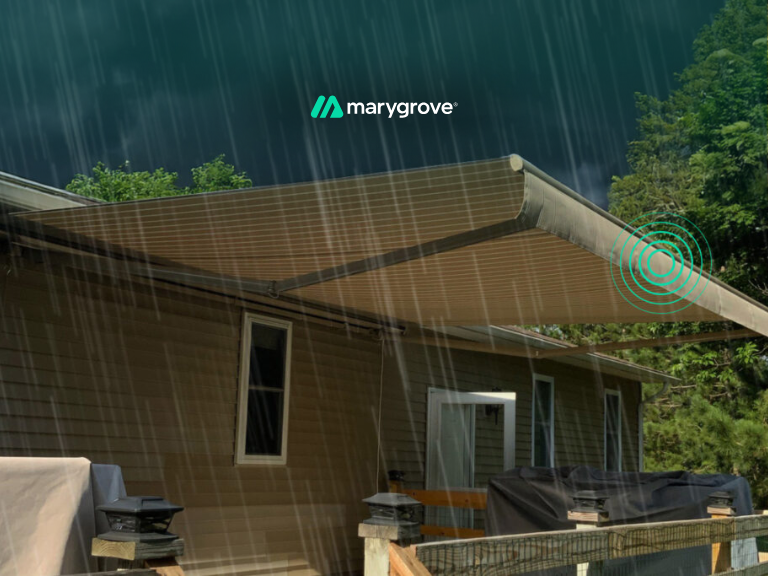Rain-friendly retractable awnings need three things: the right slope, strong water-resistant fabric (like polyester), and a sturdy frame with smart controls. Skip even one, and you risk water damage, sagging, or mold.
Using Retractable Awnings in Rain: What You Must Know Up Front
Yes, you can use a retractable awning in the rain, if it has the right pitch, fabric, and features. Most don’t, and that’s where problems start. What to check before using your awning in the rain:
- Fabric must be at least water-resistant, polyester performs best
- Pitch should be angled between 15–30° for proper drainage
- Frame needs to be strong (aluminum or powder-coated steel)
- Smart features like wind/rain sensors and app control help avoid damage
- Maintenance matters: always dry before retracting and test sensors each season
Light rain can still cause sagging, mildew, or frame damage if your awning isn’t properly set up.
With the right materials and habits, it stays functional year-round.
If you want to avoid costly mistakes and make your awning truly rain-ready, keep reading, because what most people get wrong can end up ruining a good setup.
What Most People Get Wrong About Rain and Awnings
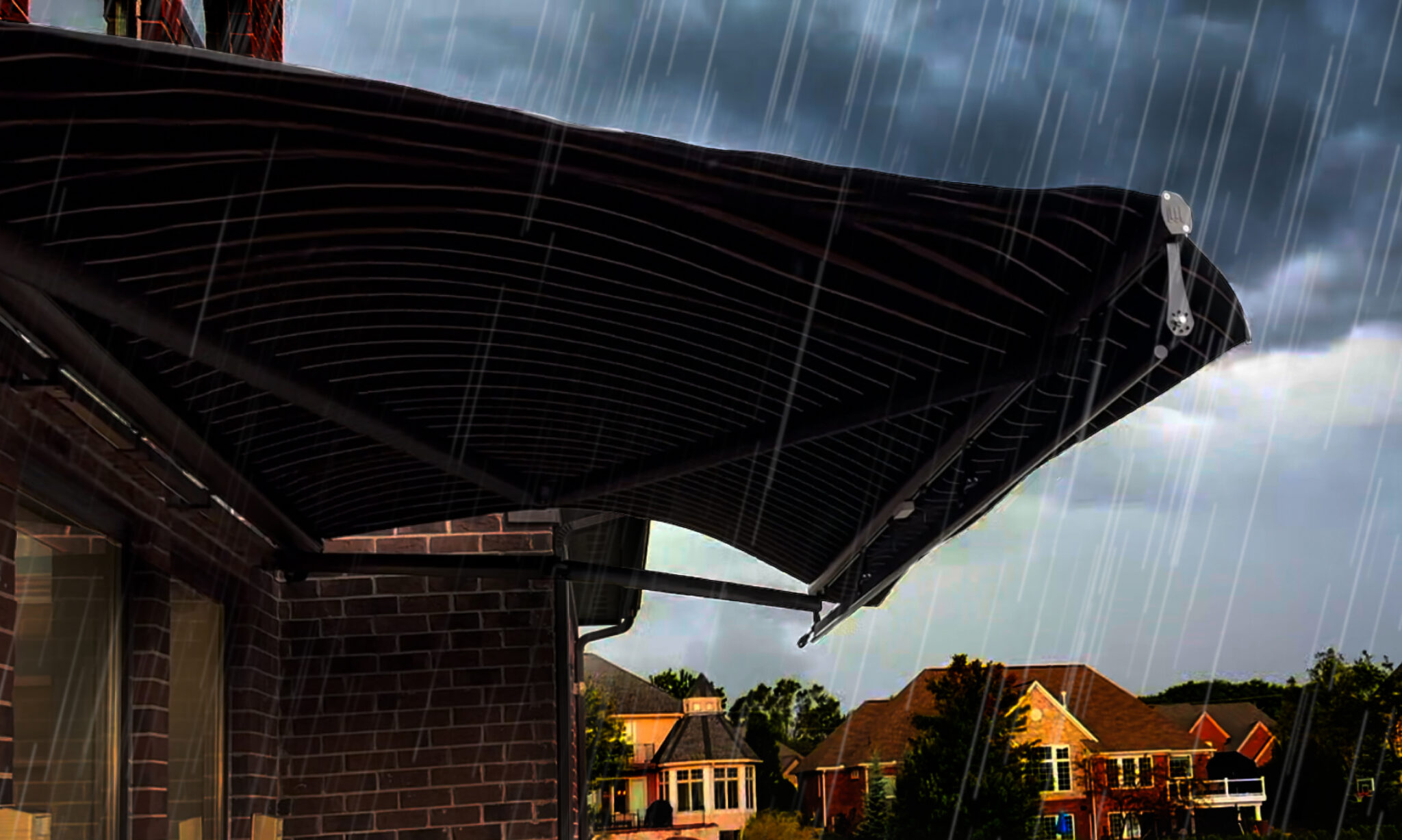
People often ask, “Can I leave my awning out in the rain?” The answer depends on how it’s made and used.
One big myth is that “rainproof” means storm-ready, it doesn’t. Let’s break down the facts.
1. Water-Resistant Isn’t the Same as Waterproof
Many awnings are labeled as rain-friendly, but most are just water-resistant.
They’re fine for a light drizzle but can fail under steady rain.
Fabrics like polyester shed water well. Others, like untreated canvas, absorb moisture, which leads to sagging or mold.
2. Pitch Angle Matters
The angle of your awning is a major factor. A pitch of 15° to 30° helps water run off. Anything flatter risks pooling. But too steep? You’ll lose use ability of the space.
That’s why adjustable pitch systems are helpful, they give you control based on the weather.
3. Motorized Doesn’t Mean Storm-Proof
Some people assume motorized awnings are fully protected. Not true.
Unless they have wind or rain sensors, they won’t retract automatically. In a surprise gust or downpour, that can lead to serious damage.
Strong arms and smart tech help, but they need to work together.
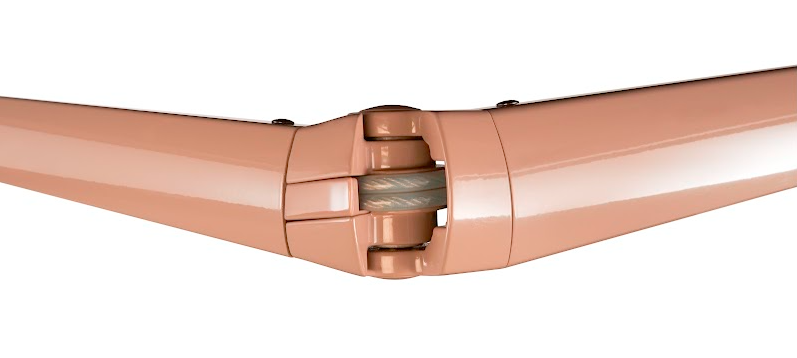
4. Light Rain vs. Heavy Rain
Light rain (short and gentle) is usually fine. Heavy rain (long-lasting or wind-driven) is not. It can overwhelm fabric, stretch arms, or pool water dangerously fast.
When in doubt, retract. And always close your awning before bed or leaving the house.
Understanding these common mistakes is the first step, but avoiding them starts with choosing the right setup. Some awnings are built to handle a bit of rain.
Others aren’t even close. Let’s look at what truly makes an awning rain-ready.
Not All Awnings Handle Rain the Same Way
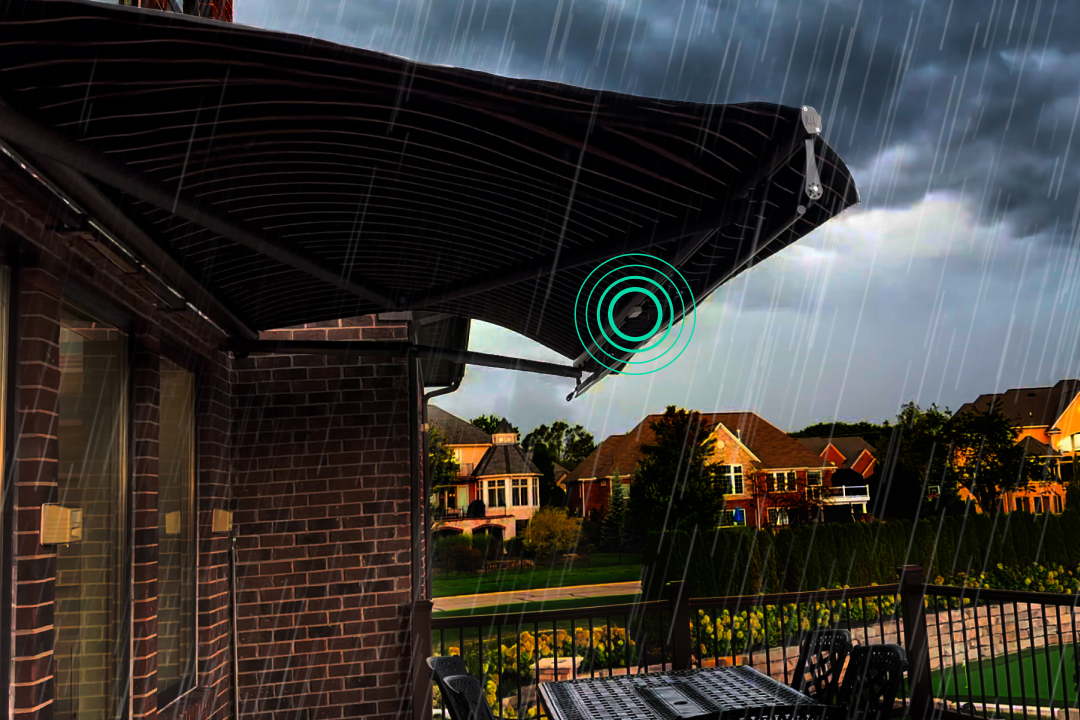
Rain doesn’t just test your patience, it tests your awning. If your shade system isn’t built with water in mind, even a light drizzle can cause sagging, fabric damage, or worse.
Here’s what separates an awning that survives the rain from one that surrenders to it.
What Defines a Rain-Ready Awning?
Not every awning is built to stay out when the weather turns. The ones that perform best in the rain share a few non-negotiable features:
- Reinforced frames that don’t buckle under added water weight
- Water-resistant or waterproof fabrics that repel instead of absorb
- Proper pitch to prevent pooling and sagging
- Smart tech like wind sensors or app-based retraction to avoid human error
These aren’t luxury upgrades, they’re practical essentials for homeowners who want to use their outdoor space more often, even when the skies aren’t perfectly clear.
And it’s not just about what your awning includes, it’s also about how those features are built and protected.
1. Look for Full Cassette Protection
A full cassette housing keeps fabric and arms fully enclosed when retracted, shielding them from rain and moisture.
This prevents mold, rust, and premature wear, especially in wet climates or during off-season storage.
2. Smart Sensors: Your Safety Net in Unpredictable Weather
Wind and rain sensors automatically retract your awning in risky conditions.
The best systems also connect to mobile apps, giving you control even when you’re not home. It’s one of the simplest ways to protect your investment, hands-free. These apps can even send you real time weather alerts to auto retract your awning when rain is detected in your area.
3. What Happens When Design Corners Are Cut
Awnings with flat pitch, untreated fabric, or flimsy hardware may look great, but they won’t last. Water pools, fabric stretches, and frames bend under the strain.
A lower price tag upfront can lead to costly repairs or full replacements later.
Of course, even the best frame or smart feature can’t help if your fabric absorbs water like a sponge. The material covering your awning plays a huge role in how well it holds up when the rain rolls in.
Let’s break down which ones actually perform.
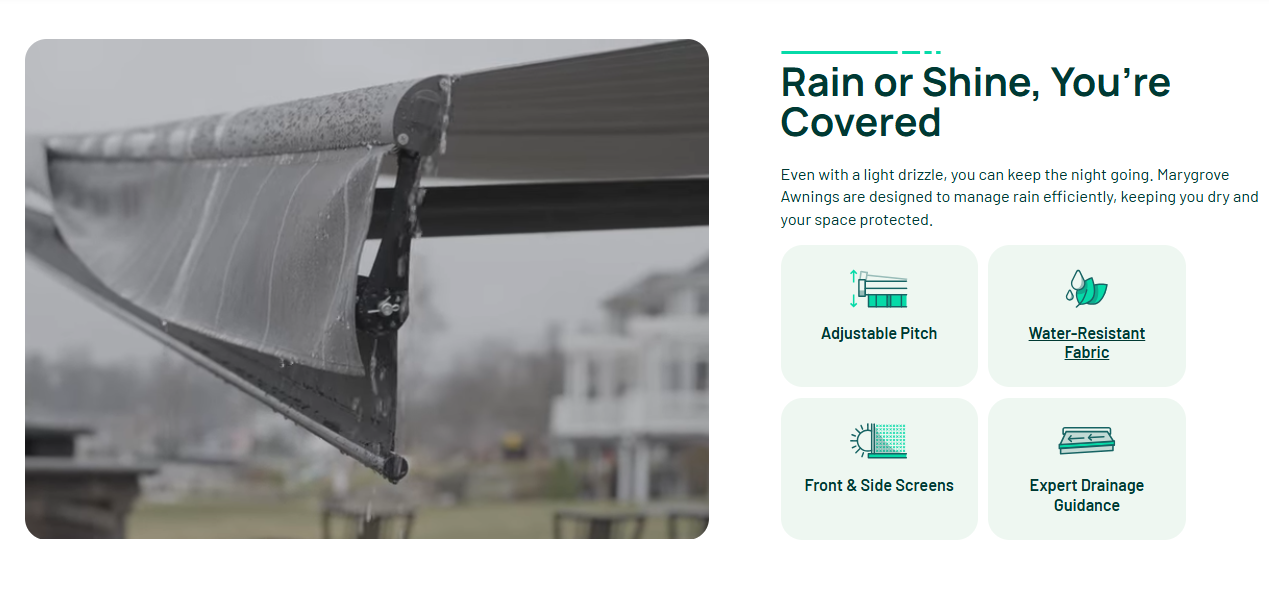
What Fabric Handles Rain the Best? Ranked from Worst to Best
When it comes to using a retractable awning in the rain, fabric choice matters just as much as frame strength or smart features.
Not all textiles are created equal, some repel water with ease, while others soak it up like a sponge. Here’s how the most common awning fabrics rank in rainy conditions.
#1: Polyester – Best in the Rain, Hands Down
Polyester is the gold standard for water resistance. It’s durable, flexible, and designed to keep water out completely.
It also resists sagging under weight, making it ideal for regions with frequent light to moderate rain.
Bonus: it’s easy to clean and doesn’t fade quickly in the sun.
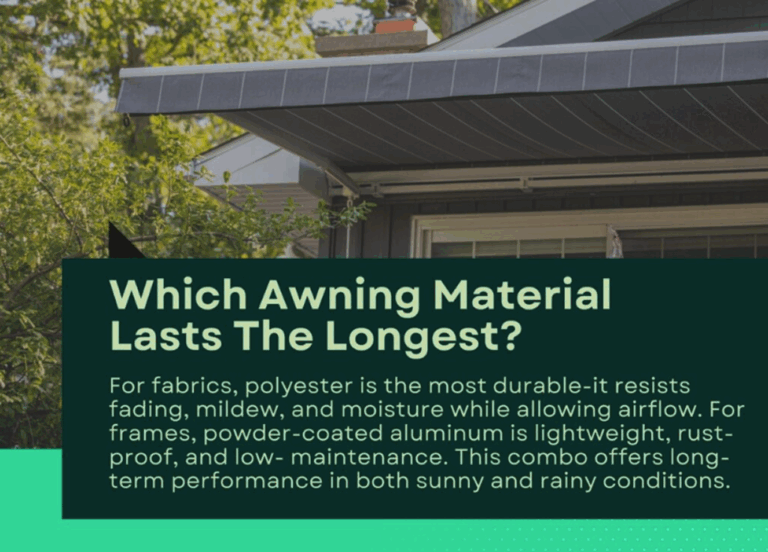
#2: Acrylic Fabric – Stylish and Strong, but Store It Dry
Acrylic fabric performs well in both sun and drizzle. It’s breathable and resists UV damage, which helps it last longer.
However like polyester, it’s water-resistant, not waterproof, meaning it sheds light rain but can absorb moisture over time.
If retracted while still damp, it’s prone to mold and mildew.
#3: Polyamide (Nylon) – Lightweight but Not Long-Term
Nylon is flexible and lightweight, often used in budget awnings or DIY kits.
While it dries quickly, it’s more prone to tearing and doesn’t offer the same long-term resistance to water pressure or UV rays.
It’s better suited for shade use than consistent wet conditions.
#4: Canvas – Classic Look, High Maintenance
Canvas has that timeless look, but it’s by far the least effective in wet weather.
It absorbs water easily, leading to stretching, sagging, and eventual mold. Without heavy treatment or regular recoating, canvas simply isn’t built for rainy-day use.
But if your current awning fabric doesn’t make the cut, there’s still a way to boost its rain performance.
How to Waterproof an Awning That Isn’t
If your awning fabric isn’t coated, or you’re unsure, you can add a layer of protection yourself. Here’s how:
- Clean the fabric thoroughly with water and a soft brush.
- Let it dry completely before applying anything.
- Use a fabric-safe waterproofing spray (look for ones labeled UV-stable).
- Spray evenly across the surface, allowing time to soak and set.
- Reapply annually or after major cleanings to maintain the seal.
It’s a quick upgrade that can make a noticeable difference, especially if you live in a place where the weather likes to change its mind.
That said, it’s a temporary solution at best.
Nothing beats the long-term protection and peace of mind that comes from investing in a weather-resistant fabric and a well-built awning designed to handle rain from the start.
Still, even with the right fabric, your awning needs the right support to handle rain reliably.
From pitch to frame strength, a few smart choices can make all the difference in how well it performs when the weather turns.
Helpful Resource → Which awning material is right for my home?
What Your Awning Needs to Stay Out in the Rain
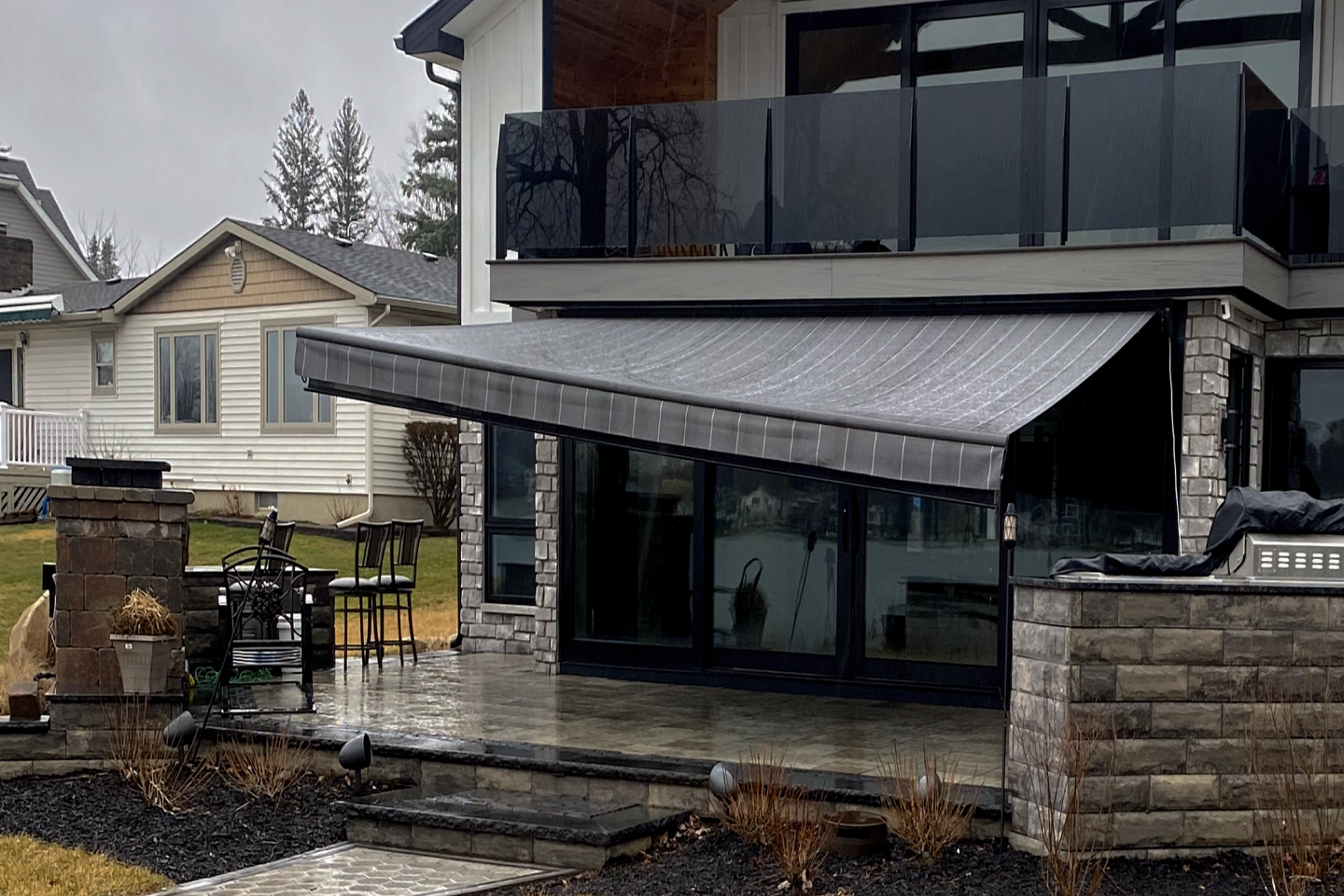
Want to keep your awning open during light rain? Make sure it’s built to handle it. Even a mild shower can cause damage if key elements aren’t in place. Here’s what matters most:
- Pitch It Right (15–30°): A proper slope lets rainwater drain off quickly. Too flat and it pools; too steep and you lose shade. Adjustable pitch systems let you adapt based on the weather.
- Pick a Strong Frame: Frames made from aluminum or powder-coated steel hold up better than cheaper, lightweight materials. Flimsy arms or brackets can twist under pressure.
- Add Extra Support: Leg kits, wind poles, and correct mounting height reduce strain and improve water runoff, especially helpful on larger awnings or exposed patios.
- Use Smart Controls: Don’t rely on memory. Awnings with wind or rain sensors and app-based controls can auto-retract when conditions change, giving you peace of mind even when you’re away.
Set up properly, your awning can handle more than just sunshine, and stay functional for seasons to come.
Of course, even the best setup has its limits. Knowing when to step in, and when to roll it in, can make all the difference.
Let’s talk about how much rain is too much.
Helpful Resource → How to Protect Your Awning from Wind Damage
When Should You Retract Your Awning in the Rain?
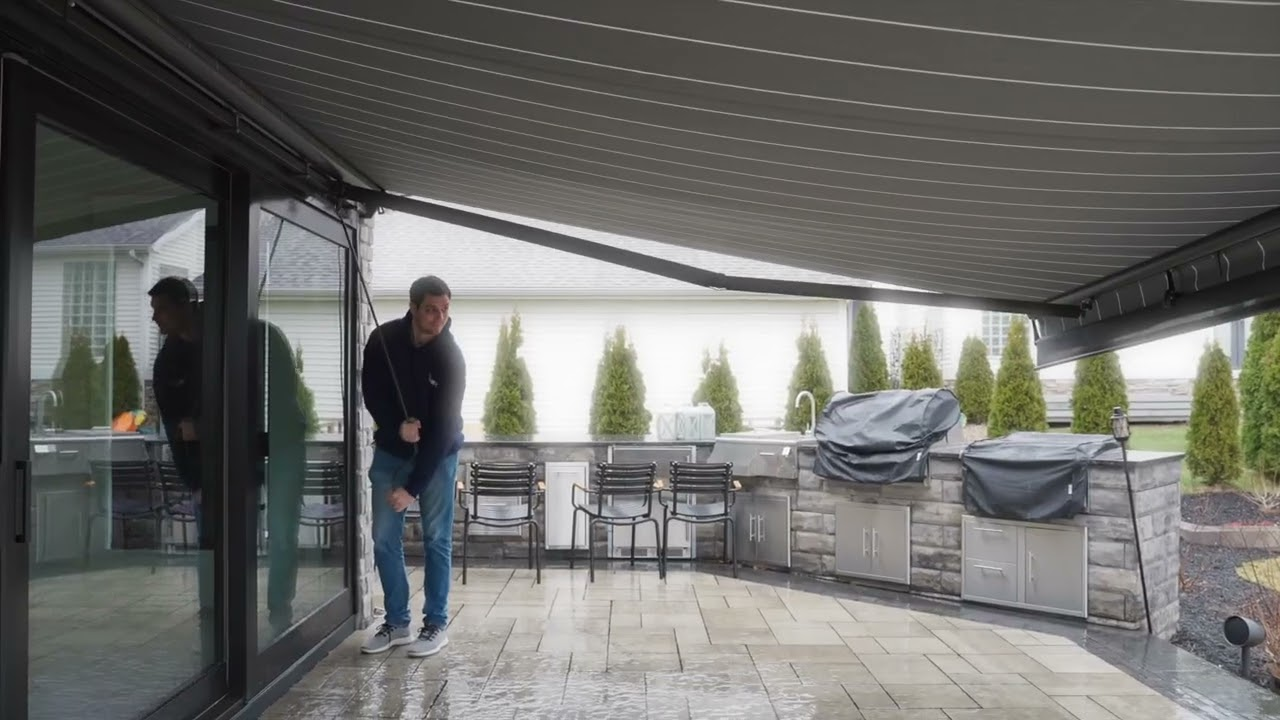
Knowing how much rain is too much can save your awning from unnecessary damage. Not every shower is a threat, but heavy, wind-driven storms can put serious stress on your setup.
Here’s when to close it.
1. Light vs. Heavy Rain: What’s Safe?
Light rain usually means a gentle, short-term drizzle, something a properly pitched, polyester awning can easily handle.
Moderate rain tends to last longer with more volume, which starts to test the fabric’s ability to shed water without pooling.
Heavy or dangerous rain includes sustained downpours, sheets of water, or anything driven sideways by strong gusts. That’s your sign to retract immediately.
A good rule: if you’d stay outside with an umbrella, your awning’s probably fine. If you’d rush inside, it’s time to close it up.
2. Wind and Rain Together? Retract Now
Rain alone is manageable, but wind plus rain is a bad combo.
Even awnings rated for 20–25 mph winds can struggle when gusts hit water-loaded fabric. That’s how arms bend and fabric sags.
Wind sensors help, but they’re not magic. Use them, but don’t rely on them completely.
3. Don’t Leave It Open Overnight
One of the most common mistakes: forgetting to retract the awning before bed.
Overnight storms or even mild weather shifts can pool water and warp the frame. It’s not worth the risk, always close your awning if you’re not around to monitor it.
4. Check Your Warranty Coverage
Many manufacturers won’t cover rain damage if the awning was left out in conditions it wasn’t rated for. Water pooling, sagging fabric, and frame strain are often labeled as “user error.”
If you’re not sure what your warranty includes, check the fine print.
Knowing when to retract your awning is only half the equation.
Keeping it in top shape, before and after the rain, makes sure it’s ready for whatever weather comes next.
Maintenance Tips to Keep Your Awning Rain-Ready

If you want your awning to last through more than just sunny days, good habits go a long way.
A little maintenance can prevent mildew, sagging, and sensor issues, especially if you’re using it during wet weather.
1. Always Dry Before You Retract
Rule number one: never roll up a wet awning. Even water-resistant fabrics can develop mold and mildew if stored damp.
After the rain stops, give the awning time to air-dry fully before closing it. If that’s not possible, open it up later on the next dry day to let it breathe.
2. Clean Gently, But Regularly
Use a soft brush and water to remove debris, dirt, or stains. Skip the pressure washer, it can break down fabric coatings.
If you’re looking for hands-off upkeep, services like Marygrove’s Mint Maintenance Program take care of seasonal cleanings and off-site storage so your awning stays in top shape year after year.
3. Test Sensors and Controls Before the Storm Season
Don’t wait for a thunderstorm to find out your wind sensor stopped working.
Before each rainy season, test your retractable system, check the app controls, calibrate the sensors, and make sure auto-retract features still trigger correctly.
A five-minute test today can save you from a major repair tomorrow.
A little care goes a long way. With the right habits and occasional tune-ups, your awning will stay dependable, not just on sunny days, but through the rainy ones too.
Helpful Resource → Cleaning Canvas Awnings Without Damage | Pro Guide + Tips
Final Verdict: Yes, But Only If You’re Set Up for It
A retractable awning can absolutely be used in the rain, if it’s built for it.
Look for key features like a 15–30° adjustable pitch, polyester fabric, wind sensors, and full cassette housing.
Rain-friendly awnings need strong frames, proper drainage, and regular upkeep to handle even light showers.
But once those boxes are checked, there’s no reason to run inside every time the skies turn gray.
Not sure your awning is up to the job?
Marygrove’s rain-smart retractables let you enjoy the outdoors, even in a drizzle, with durable fabric, smart controls, and reliable protection built right in.
